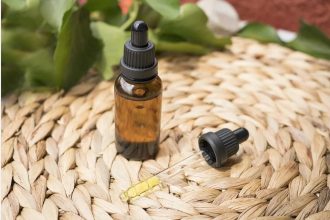It’s important to feed your family pet with the correct amount of food, yet it can be difficult for new pet owners to determine how much dog food should you feed their family pet. Dog nutrition is a crucial part of keeping your canine companion healthy and strong. Knowing what type of diet works best for their particular breed and size helps ensure they get the nutrients they need in order to live a long life full of health and vitality. In this blog post, we will discuss some key information about feeding your beloved four-legged friend: different types of dog food available, guidelines on portion control, and tips on making sure Fido gets all the essential vitamins and minerals he needs. With the right knowledge about dog nutrition, you’ll never have to worry again about your pup’s dietary needs!
What type of dog food should you buy for your pet
As a pet owner, choosing the right dog food for your furry friend can be a daunting task. With so many options available on the market, how do you know which one is the best for your pet? First and foremost, it’s important to consider your dog’s age, breed, size, and activity level. Puppies have different nutritional requirements than adult dogs, while small breeds have different needs compared to larger breeds. You may also want to take into account any health concerns or dietary restrictions your dog may have. When selecting dog food, check the ingredients list and make sure it contains high-quality protein sources and nutrients essential for your pet’s health. Furthermore, it is also important to know that you can find services for the delivery of raw dog food for your pet. It’s always a good idea to consult with your vet for their recommendations, as they can provide advice tailored specifically to your dog’s individual needs. Ultimately, choosing the right dog food for your pet can help ensure a happy and healthy life together.
How much food should you feed your pet per day?
As pet owners, we all want to make sure we are providing our loved ones with the best possible care. One important aspect of caring for our pets is ensuring they are receiving the proper nutrition. So, how much food should you be feeding your furry friend per day? The answer can vary depending on several factors, including their age, weight, and activity level. It’s always best to consult with your veterinarian to determine the appropriate amount to feed your pet. However, as a general rule of thumb, most dogs and cats require about two meals per day, with the recommended daily serving size listed on the packaging of their food. Remember, overfeeding your pet can lead to weight gain and potential health problems, so it’s essential to find the right balance for their individual needs.
Factors to consider when choosing a dog food brand
Choosing the right brand of dog food can be a daunting task, but it’s one of the most important decisions you can make for your furry friend. Before making a choice, there are several factors you should consider. First, take into account your dog’s age, breed, and weight. This will help you determine the type of food and nutritional requirements they need. Next, read the ingredients list carefully to ensure the food is made from high-quality protein sources and does not contain any harmful additives or allergens. Additionally, check for a statement from the Association of American Feed Control Officials (AAFCO), which indicates the food meets minimum nutritional standards. Lastly, consider your budget and look for a brand that fits within your means while still providing the necessary nutrients for your dog’s health. By taking these factors into account, you can make a well-informed decision when choosing a dog food brand that will keep your furry friend healthy and happy.
Tips for monitoring portion size and measuring out meals
Monitoring portion size and measuring out meals can be beneficial for maintaining a healthy diet and weight for your pet. One tip is to use a measuring cup or scale when feeding your pet. This allows you to accurately measure out the correct portion size for each meal. Additionally, it’s important to consider any treats and snacks that are given throughout the day, as they can quickly add up and lead to weight gain if not monitored properly. If possible, try to incorporate treats into their daily meals or offer them as a reward for good behavior. Finally, remember to consult with your veterinarian regularly to make sure you are providing the proper nutrition for your pet’s individual needs.
Signs of overfeeding your pet and how to prevent it
As pet owners, it’s natural to want to spoil our furry friends with treats and extra portions of their favorite meals. However, overfeeding can have serious negative consequences on our pets’ health. Some common signs of overfeeding include excessive lethargy, weight gain, and even vomiting. Prevention is key, and the best way to avoid overfeeding is by monitoring our pets’ food intake and sticking to a consistent feeding schedule. Additionally, we should avoid giving our pets table scraps and treats that are high in fat and calories. By being mindful of our pets’ eating habits, we can ensure that they live long, healthy, and happy lives.
In conclusion, choosing the best dog food for your pet and understanding how much to feed them requires careful consideration. Ultimately, it’s important to look at personal factors such as age, weight, activity level, and health conditions when making decisions about what type of food to give and how much to feed. Nutrition in dogs also relies heavily on variety—so be sure to switch up their diet often and add different types of ingredients into their bowl. Smaller portion sizes may help prevent overfeeding issues, and measuring out meals with appropriate cups or scales can also be helpful in maintaining proper nutrition. Don’t forget that monitoring your pet’s weight regularly is key in identifying nutritional deficiencies early on. Feeding your furry friend can be a huge responsibility, but following these tips can give you peace of mind that they are getting the care they deserve!















